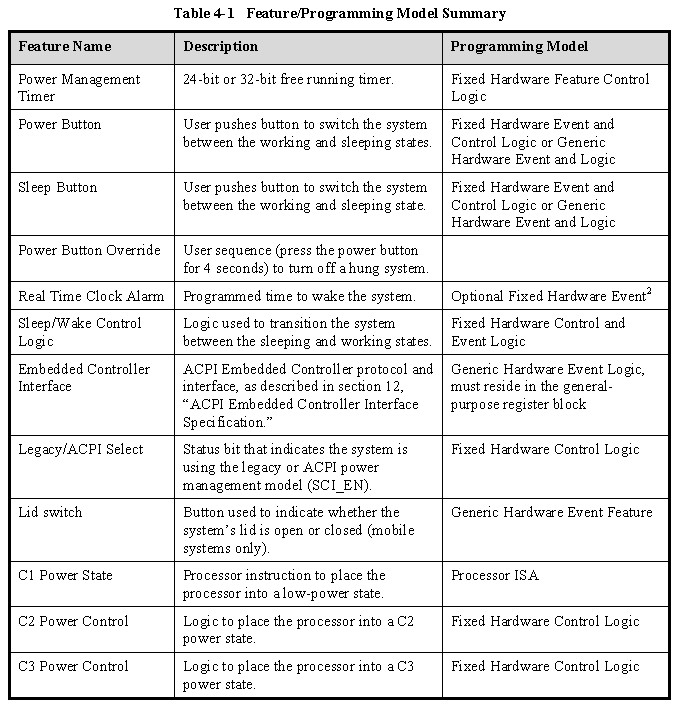ACPI 定义了ACPI-Compatible OS控制和管理ACPI-Compatible Hardware平台的标准接口机制。 在这里,ACPI定义“Hardware”为一个programming model及其behavior。
ACPI Hardware分类
Fixed和Generic。Fixed类的Hardware符合ACPI Spec定义的Programming和Behavior;而Generic类的Hareware在实现上则更具灵活性。
ACPI Hardware Feature分类
Fixed Hardware Feature有如下规定:
1. 性能相关的feature
2. 唤醒过程中driver需要的feature
3. 允许从灾难性的OS软件失败恢复所需要的feature
Generic Hardware Feature是由ACPI Namespace中的ACPI Control method所控制的,比较灵活。
ACPI定义了实现Generic Hardware时可以使用的八种Address space:
1. System I/O
2. System Memory
3. PCI Configuration Space
4. Embedded Controller
5. SMBus
6. CMOS
7. PCI Bar Target
8. IPMI(Intelligent Platform Management Interface)


ACPI Register Model
Fixed Hardware Register, 是实现ACPI-defined interface所必须的。在FADT中由OEM定义,是固定的,不能再改变。

Generic Hardware Register,是Value-added Hardware 产生的events所必须的。






















 1220
1220

 被折叠的 条评论
为什么被折叠?
被折叠的 条评论
为什么被折叠?








